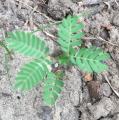
DMT-Nexus member
Posts: 205 Joined: 29-Jun-2011 Last visit: 17-Mar-2019
|
Is there a way to tell if you have nitrogen fixing bacteria in your soil? And if not, what is the cheapest and easiest way of introducing said bacteria as an alternative to ferts?, this is the best way I can think of to keep things organic for my mimosas. Also what kind of micro-nutes should I focus on? Thanks for the help 
|
|
|
|
|

[insert something smart/deep here]
Posts: 890 Joined: 20-Oct-2013 Last visit: 27-Apr-2024 Location: Location: just behind but under on the side
|
I have no answer for you, only more question cause i have 2 M.Hostilis 6 months old and they are loosing all their leaves (  ) with no reason (that i'm aware about). Does MH needs those bacteria to live or ferts are enough ? And i'm listening what others have to say about this topic. « I love the smell of boiling MHRB in the morning »
|
|
|

DMT-Nexus member
Posts: 205 Joined: 29-Jun-2011 Last visit: 17-Mar-2019
|
I don't know DansMa, I heard that you don't need the extra nitrogen if you have the bacteria, and you will need to fertilize if you don't have them. Kind of a gray area for me. How much yellowing do you have? They will drop the bottom leaves quite naturally under low light conditions. I love growing plants but mimosas are new to me.
|
|
|

DMT-Nexus member
Posts: 205 Joined: 29-Jun-2011 Last visit: 17-Mar-2019
|
After doing some digging around I found lots of info on the subject and a plan to try to inoculate my soil with said bacteria. http://www.agriculture.g...-49a9-a31c-829f38598d7e and http://www.tropicalperma...en-fixing-bacteria.html
My plan is to go to my grandpa's garden (the potato patch to be specific) and either mix a small amount of his soil with mine or make a tea of sorts with potato skins and roots. Any advice?
|
|
|

DMT-Nexus member
Posts: 267 Joined: 09-Mar-2012 Last visit: 23-Aug-2025
|
I'm not sure about the bacteria. Mimosa seems pretty good at getting nitrogen already. Unrelated, but one problem I've noticed with growing them indoors is root rot. Could have been a personal problem, but I guess in nature as well they are susceptible to rotting and fusarium wilt, especially if the soil isn't aerated enough. One thing I saw suggested while researching it is something called Myco-Stop. Probably going to try using that with my next round of plants. http://www.planetnatural.com/product/mycostop/
|
|
|

DMT-Nexus member
Posts: 205 Joined: 29-Jun-2011 Last visit: 17-Mar-2019
|
I think m.hostilis roots and the bacteria form a symbiotic relationship that fixes atmospheric nitrogen into the soil, it happens in the wild naturally, legumes also naturally have this relationship with the bacteria.
I figured that I would try to inoculate the bacteria into my potting soil as an amendment of sorts and see what happens, it could be beneficial for better roots.
|
|
|

DMT-Nexus member
Posts: 205 Joined: 29-Jun-2011 Last visit: 17-Mar-2019
|
As for the root rot, I have noticed two different lines of thinking when it comes to watering, a lot of people think its native to rain forests and a lot of people say it comes from the semi-arid northern region of Brazil. I have noticed that every pic I've seen in its native habitat looks semi-arid, I let the soil dry out a bit between waterings, but I don't let it get bone dry either. But then again this is my first time growing them.
|
|
|

DMT-Nexus member
Posts: 1129 Joined: 12-Jul-2014 Last visit: 18-May-2024 Location: on the world in time
|
Standard pea innoculent from your local garden store will do the trick. BundleflowerPower attached the following image(s):  image.jpg (911kb) downloaded 33 time(s).
|
|
|

DMT-Nexus member
Posts: 205 Joined: 29-Jun-2011 Last visit: 17-Mar-2019
|
Perfect! that's exactly what I was looking for, I'll pick some up if I can find around here, thanks BundleFlower  . I take it you have used it? Does it make a big difference? Not that I care, I'll use something like that anyways.
|
|
|

DMT-Nexus member
Posts: 1129 Joined: 12-Jul-2014 Last visit: 18-May-2024 Location: on the world in time
|
I think it makes a difference for plants in pots. If they're in the ground and you have any type of leguminous plants growing wild there, then your soil should already have them. I just use it on seedlings
|